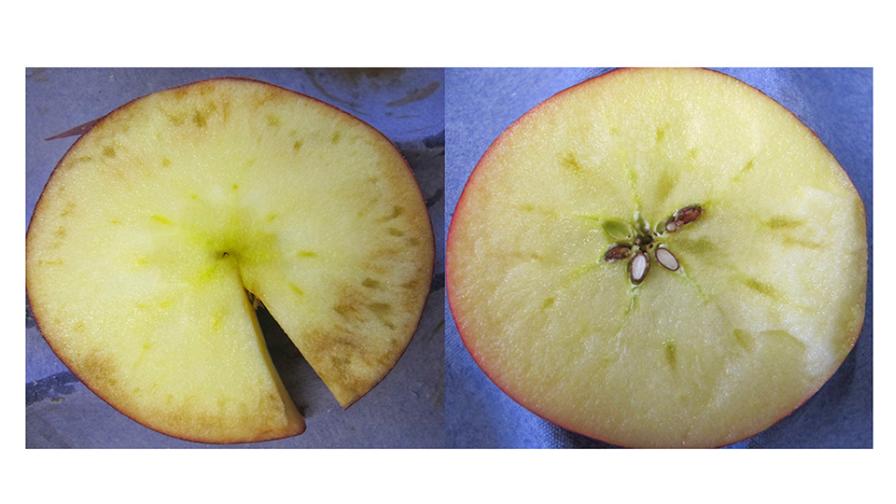Pome Fruit Storage Disorders: The PGR Effect
Christopher Watkins lets it be known up front that his opinion is one of a “postharvest guy” rather than a “field guy.”
But when the issue at hand involves storage disorders and how they are affected by plant growth regulators (PGRs), such a stance, from a Cornell University Professor of Horticulture, carries a fair amount of weight.
So, what would Watkins’ take-home message be regarding PGRs?
“My preference,” he says, “is to use them to get better storage quality at the ‘normal’ harvest rather than only harvest season extension.”
That recommendation piggybacks on his team’s prior research that indicates two PGRs, Harvista and ReTain, can delay stem end flesh browning (SEFB) development in ‘Gala’ apples during storage.
Harvista (1-methylcyclopropene [1-MCP]) is manufactured by AgroFresh; ReTain (aminoethoxyvinylglycine) by Valent BioSciences.
The question then becomes: When exactly should a grower apply those PGRs to ‘Gala’?
“As close to harvest as possible may be better to avoid too much delay of color development,” Watkins says. “Then we’re not running into this problem that people are complaining about, that we’re using this only as a way to stretch out a harvest, sometimes at the expense of our storage quality.”
In any case, growers should discuss the issue with their Extension specialists or consultants before reaching any conclusions, Watkins says.
PGR PROS/CONS
PGRs are powerful tools to manage harvest and gain color and size, Watkins says. They slow down the maturation progression but do not uniformly stop each biological process. For instance, fruit still ripens even as color development is delayed.
In turn, PGRs should be used with storage implications in mind, Watkins says. From a storage perspective, fruit that is harvested “late” is still past best for maximum storage potential.
“Some of you have heard my whine about this before,” he says. “[PGRs] are not magic bullets.”
Storage disorders that have higher incidence by slowing fruit maturation include bitter pit, internal carbon dioxide injury, and external carbon dioxide injury.
Disorders that have lower incidence by delaying maturation include SEFB and soft scald.

‘Jonagold’ apples untreated (left) and treated with Harvista PGR at one week before harvest and stored at 68° F for 15 days.
Photo by Y. Al Shoffe
‘HONEYCRISP’ SYNOPSIS
Watkins and his team have found the use of Harvista alone on ‘Honeycrisp’ slightly benefits firmness with repeated and double rates but increases fruit susceptibility to bitter pit.
The use of postharvest 1-MCP alone maintains higher acidity and decreases bitter pit and senescent breakdown but increases leather blotch and core browning.
The combined use of Harvista and 1-MCP increases susceptibility of fruit to flesh browning and carbon dioxide injury.
“My take-home message is to use extreme caution when using 1-MCP, especially in Harvista-treated fruit,” Watkins says. “Some storage operators are already learning what blocks are developing a history of certain types of disorders and which ones should not be put into long-term storage.”
With blocks that are at elevated risk for bitter pit, Watkins concludes that the use of PGRs may not be advisable.
“The last thing you should be doing is putting PGRs in a block where you already have signs of bitter pit developing,” he says.
BONUS RESEARCH
Watkins, also the Director of the Cornell Cooperative Extension, cites research involving the effects of PGRs on postharvest decrease of stress watercore.
‘Jonagold’ was treated with Harvista in a 2019 trial under the premise that the treatment would slow loss of watercore. Instead, it increased the dissipation of watercore during storage. In a follow-up experiment last year, ReTain accelerated the loss of stress watercore compared with the untreated fruit in the field.
“It’s something that we’re working on and are kind of excited about,” Watkins says, “especially because we think that the amount of stress watercore is linked to some of the storage problems in the industry throughout New York.”










